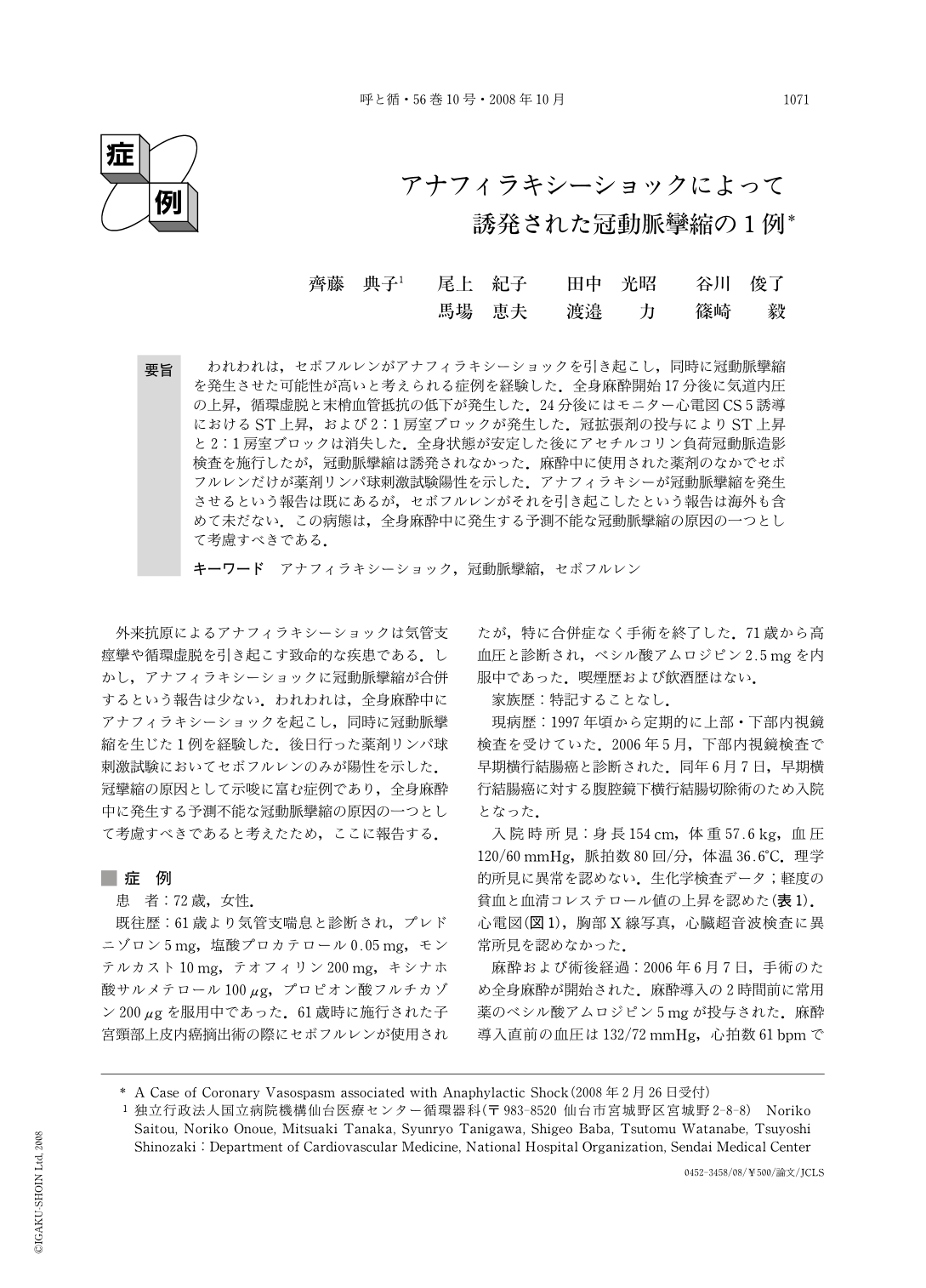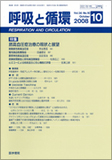Japanese
English
- 有料閲覧
- Abstract 文献概要
- 1ページ目 Look Inside
- 参考文献 Reference
要旨 われわれは,セボフルレンがアナフィラキシーショックを引き起こし,同時に冠動脈攣縮を発生させた可能性が高いと考えられる症例を経験した.全身麻酔開始17分後に気道内圧の上昇,循環虚脱と末梢血管抵抗の低下が発生した.24分後にはモニター心電図CS5誘導におけるST上昇,および2:1房室ブロックが発生した.冠拡張剤の投与によりST上昇と2:1房室ブロックは消失した.全身状態が安定した後にアセチルコリン負荷冠動脈造影検査を施行したが,冠動脈攣縮は誘発されなかった.麻酔中に使用された薬剤のなかでセボフルレンだけが薬剤リンパ球刺激試験陽性を示した.アナフィラキシーが冠動脈攣縮を発生させるという報告は既にあるが,セボフルレンがそれを引き起こしたという報告は海外も含めて未だない.この病態は,全身麻酔中に発生する予測不能な冠動脈攣縮の原因の一つとして考慮すべきである.
We report that sevoflurane possibly caused anaphylactic shock leading to coronary vasospasm in a patient during general anesthesia. Seventeen minutes after the start of inhalation of sevoflurane, an increase in airway pressure, collapse, and a decrease in peripheral artery resistance occurred. Twenty-four minutes later, elevation of the ST-segment and 2: 1 atrioventricular block occurred, which was reversed by using a coronary vasodilator. Coronary angiography performed later in the patient was in a stable condition demonstrated 50% of stenosis in the left anterior descending artery. Intracoronary injection of acetylcholine did not induce coronary vasospasm. A drug-induced lymphocyte stimulation test indicated that only sevoflurane among all drugs used in general anesthesia was positive.
This is the first report of sevoflurane-induced anaphylactic shock and coronary vasospasm, which may explain one of the mechanisms of unpredictable coronary vasospasm occurring during general anesthesia.

Copyright © 2008, Igaku-Shoin Ltd. All rights reserved.


